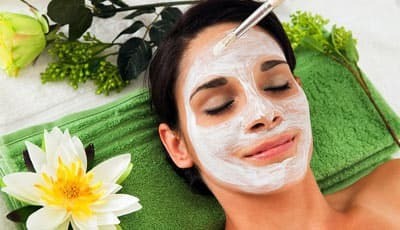We all enjoy basking in the warmth of the sun, and with good reason—sunlight helps our bodies produce vital vitamin D. However, while a little sun is beneficial, excessive exposure can wreak havoc on our skin. From painful sunburns to the long-term effects of premature aging and increased skin cancer risks, the consequences of sun damage are real. The good news is that with the right care, it’s possible to recover and restore sun-damaged skin naturally. In this post, we’ll explore practical tips to help you heal, protect, and maintain healthy skin despite the sun’s harsh effects.
Why Sun Exposure Affects Your Skin in Cusco
The sun emits various types of light, including ultraviolet (UV) rays, which are stronger at high altitudes like Cusco and can cause significant skin damage. Research indicates that UV exposure is responsible for up to 80% of skin aging. While it’s impossible to fully reverse sun damage, there are natural methods to help your skin recover, repair, and maintain its health over time.
What Happens When You Get Sunburned?
Sunburn occurs when UV rays penetrate the skin and cause direct damage to the DNA in your skin cells. This damage triggers an inflammatory response, which is why your skin becomes red, painful, and tender. By the time these visible signs appear, significant harm has already been done at a cellular level.
The skin’s ability to repair itself is compromised, and the repeated trauma from sunburns can result in long-term issues, such as premature aging, the formation of deep wrinkles, and the development of dark spots. Additionally, the cumulative effect of repeated sunburns increases the risk of more severe conditions, including skin cancer, as the UV rays can cause mutations in the DNA of skin cells, ultimately leading to the uncontrolled growth of abnormal cells.

Steps to Recover from Sun Damage
- Use Sunscreen Regularly
Prevention is key. Always apply broad-spectrum sunscreen with an SPF of 30 or higher, and reapply every 60 minutes when outdoors. Wearing protective clothing, like hats and long sleeves, can also shield your skin from harmful UV rays. - Avoid Direct Sun After Treatments
After skin treatments like facials, peels, or massages, your skin becomes more sensitive. It’s crucial to avoid direct sun exposure after such treatments to prevent further damage. - Hydrate Dry Skin
Sun exposure can lead to dry, flaky skin. To rehydrate, use gentle exfoliators to remove dead skin cells and follow up with a hydrating lotion. If your skin is sunburned, avoid petroleum-based products, as they trap heat and may slow down the healing process. - Moisturize Regularly
Regular moisturizing is essential to keep skin soft and smooth, especially after sun exposure. A nourishing lotion or cream will help restore moisture and reduce dryness and irritation. - Stay Hydrated
Drinking plenty of water helps maintain your skin’s moisture balance and accelerates the healing process after sun exposure.
Prevent Future Damage
To prevent future skin damage, avoid prolonged sun exposure and always wear sunscreen. It’s also important to remember that tanned skin isn’t necessarily healthier. Prolonged sun exposure can lead to premature aging and increase the risk of skin cancer.
By taking the right precautions—using sunscreen, staying hydrated, and moisturizing—you can keep your skin youthful and healthy for years to come.
How Facial Cleansing Helps Recover Sun-Damaged Skin
Facial cleansing is an essential step in recovering from sun damage. It helps remove impurities, dead skin cells, and environmental pollutants that could further irritate or clog the pores. Regular cleansing with a gentle, hydrating cleanser restores your skin’s natural balance, promotes healing, and reduces inflammation. After sun exposure, the skin becomes more vulnerable to irritation, making it crucial to use soothing ingredients like aloe vera, chamomile, or green tea. These ingredients calm the skin, reduce redness, and aid in recovery.
At Relaxing Time Massage, we offer professional facials tailored to rejuvenate sun-damaged skin. Our facial treatments use soothing, hydrating products that promote skin recovery, ensuring your skin absorbs nourishing moisturizers and serums more effectively. This simple yet powerful step helps not only remove the buildup of sun-damaged cells but also prepares your skin for deep hydration and healing.

